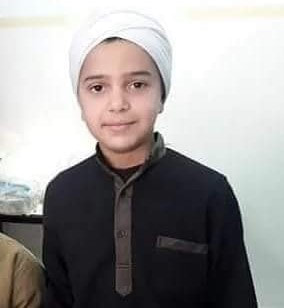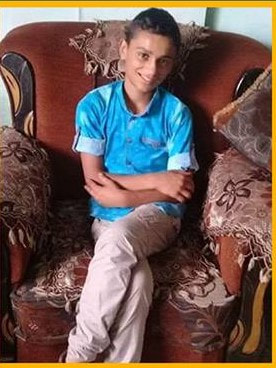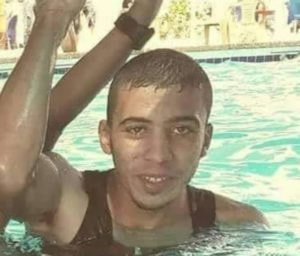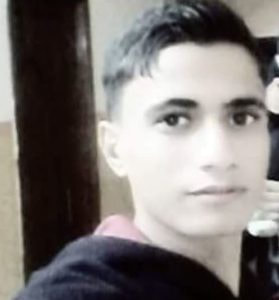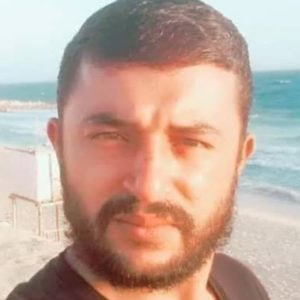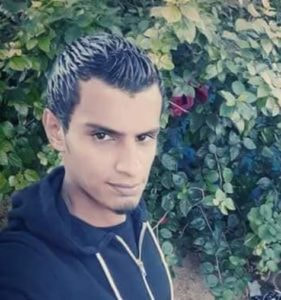28 sept 2018
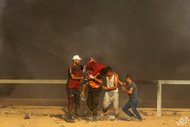
by Nabil Salem
The government in Israel presents us with more proof, every day, that it represents and adopts an aggressive approach that is not interested in peace, or even willing to respect international laws and conventions. It also gives us evidence that it wages wars for the sake of it and in order to satisfy its rampant desire for aggression and expansion, serving its criminal objectives against the Arabs in general, and the Palestinian people in particular.
Although Israel’s leaders have typically hidden the objectives of their violent wars under various pretexts, such as preventative or pre-emptive action and other justifications that they try to promote to the world, it is noteworthy that, despite their various operational names, these wars are not all that Israel is doing or thinking about. There are wars for other reasons that demonstrate the moral decline of Israel’s ruling establishment and the level of criminality and brutality it has reached.
In a report by Israeli writer Rogel Alpher, in Haaretz, he explains why Israel might launch another war against the people of Gaza.
While the occupying state always tries to justify its aggression as “self-defence”, Alpher reveals that a new war is needed so that the Israeli arms industry and Defence Forces can field test new weapons and ammunition against live targets. This is sickening.
Although he also mentioned that, among the reasons which may lead Israel to war are internal disputes and the upcoming elections, the fact that it can even be talked about testing new weaponry, in this way, is itself criminal and potentially a flagrant violation of all morality and international laws and conventions. It also reaffirms what was revealed by Israeli film-maker Yotam Feldman in his 2013 film, The Lab. So, this is nothing really new.
If we take into account the unjust siege imposed by the Israeli occupation on more than two million Palestinians in the Gaza Strip, turning the enclave into the largest prison in the world, the testing of Israeli weapons in the territory adds a new and shameful dimension to the ongoing Israeli crimes against the Palestinian people. We can also throw in Israel’s use of internationally banned weapons over a number of years.
We would need a lot of time and effort to record all Israeli crimes committed against the Palestinians, from pre-1948 to today. The state of Israel itself was founded on massacres of Palestinian civilians by Zionist terrorist gangs. Since then, there have been countless crimes committed, including unlawful killings, forced displacement, arbitrary detention, the siege and other unjustifiable restrictions on movement, illegal settlements and discriminatory policies and practices, including openly racist laws.
It goes without saying that Israel would not have been able to commit all of these crimes without the unlimited and unquestioned support of many colonial powers, particularly the US, and the willful disdain for international public opinion and international law. Unfortunately, it seems that such legal restraints are only to be used when it suits the victors of World War Two and the other nuclear powers. They do not intend to restore the rights of oppressed peoples, but to justify persecution or injustice under false slogans and pretexts.
As such, it is logical to say that Israel will not stop committing its crimes, but will intensify them, as long as there is no Arab power ready to stop it or a serious will to contain and limit its criminal role in our region. The colonial state not only threatens peace and security in the Middle East, but also around the whole world. Its weapons testing, on live targets in the besieged Gaza Strip, is a clear demonstration of the fact that Israel will stop at nothing to achieve its aims and objectives.
~ Middle East Monitor/Days of Palestine
Opinion/Analysis 09/25/18 World Bank: Gaza’s Economy Now In ‘Free Fall’
The government in Israel presents us with more proof, every day, that it represents and adopts an aggressive approach that is not interested in peace, or even willing to respect international laws and conventions. It also gives us evidence that it wages wars for the sake of it and in order to satisfy its rampant desire for aggression and expansion, serving its criminal objectives against the Arabs in general, and the Palestinian people in particular.
Although Israel’s leaders have typically hidden the objectives of their violent wars under various pretexts, such as preventative or pre-emptive action and other justifications that they try to promote to the world, it is noteworthy that, despite their various operational names, these wars are not all that Israel is doing or thinking about. There are wars for other reasons that demonstrate the moral decline of Israel’s ruling establishment and the level of criminality and brutality it has reached.
In a report by Israeli writer Rogel Alpher, in Haaretz, he explains why Israel might launch another war against the people of Gaza.
While the occupying state always tries to justify its aggression as “self-defence”, Alpher reveals that a new war is needed so that the Israeli arms industry and Defence Forces can field test new weapons and ammunition against live targets. This is sickening.
Although he also mentioned that, among the reasons which may lead Israel to war are internal disputes and the upcoming elections, the fact that it can even be talked about testing new weaponry, in this way, is itself criminal and potentially a flagrant violation of all morality and international laws and conventions. It also reaffirms what was revealed by Israeli film-maker Yotam Feldman in his 2013 film, The Lab. So, this is nothing really new.
If we take into account the unjust siege imposed by the Israeli occupation on more than two million Palestinians in the Gaza Strip, turning the enclave into the largest prison in the world, the testing of Israeli weapons in the territory adds a new and shameful dimension to the ongoing Israeli crimes against the Palestinian people. We can also throw in Israel’s use of internationally banned weapons over a number of years.
We would need a lot of time and effort to record all Israeli crimes committed against the Palestinians, from pre-1948 to today. The state of Israel itself was founded on massacres of Palestinian civilians by Zionist terrorist gangs. Since then, there have been countless crimes committed, including unlawful killings, forced displacement, arbitrary detention, the siege and other unjustifiable restrictions on movement, illegal settlements and discriminatory policies and practices, including openly racist laws.
It goes without saying that Israel would not have been able to commit all of these crimes without the unlimited and unquestioned support of many colonial powers, particularly the US, and the willful disdain for international public opinion and international law. Unfortunately, it seems that such legal restraints are only to be used when it suits the victors of World War Two and the other nuclear powers. They do not intend to restore the rights of oppressed peoples, but to justify persecution or injustice under false slogans and pretexts.
As such, it is logical to say that Israel will not stop committing its crimes, but will intensify them, as long as there is no Arab power ready to stop it or a serious will to contain and limit its criminal role in our region. The colonial state not only threatens peace and security in the Middle East, but also around the whole world. Its weapons testing, on live targets in the besieged Gaza Strip, is a clear demonstration of the fact that Israel will stop at nothing to achieve its aims and objectives.
~ Middle East Monitor/Days of Palestine
Opinion/Analysis 09/25/18 World Bank: Gaza’s Economy Now In ‘Free Fall’
|
|

Nasser Musabeh 12 video video
Mohammed al-Houm, 14 video Iyad al-Shaer, 18 video Mohammed Inshasi, 18 video Mohammed Haniyeh 24 Mohammed Shakhsa, 24 Mohammed al-Awawda, 26 At least seven Palestinian civilians were killed and dozens injured on Friday when the Israeli occupation army opened fire at the Palestinians protesting along Gaza border with the 1948 occupied Palestinian territories. Thousands of Palestinians took part in the protests of the 27th Friday of the Great March of Return which was named "Friday of al-Aqsa Intifada". |
According to Gaza's Health Ministry, the martyrs were identified as Mohammed al-Houm, 14, Iyad al-Shaer, 18, Mohammed Shakhsa, 24, Mohammed Inshasi, 18, and Mohammed al-Awawda, 26. The identity of two other martyrs is still unknown.
Spokesman for the ministry Ashraf al-Qedra said that 506 Palestinians were injured, 90 of whom by live ammunition, and three of whom are in critical condition.
Among the injured are 35 children, four women, four paramedics, and two journalists. video
The Higher National Committee for the Great March of Return earlier this week called for the largest participation in the activities of the 27th Friday of the Great March of Return which would be organized particularly to mark the anniversary of al-Aqsa Intifada.
The committee in a statement affirmed that Gaza border protests will continue until the siege is lifted and refugees are allowed to return to their homes from which they were expelled in 1948.
Spokesman for the ministry Ashraf al-Qedra said that 506 Palestinians were injured, 90 of whom by live ammunition, and three of whom are in critical condition.
Among the injured are 35 children, four women, four paramedics, and two journalists. video
The Higher National Committee for the Great March of Return earlier this week called for the largest participation in the activities of the 27th Friday of the Great March of Return which would be organized particularly to mark the anniversary of al-Aqsa Intifada.
The committee in a statement affirmed that Gaza border protests will continue until the siege is lifted and refugees are allowed to return to their homes from which they were expelled in 1948.
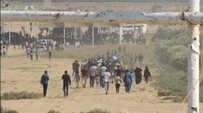
At least 35 Palestinians were injured by Israeli forces, during protests at the eastern borders of the besieged Gaza Strip, on Friday.
The Palestinian Ministry of Health in Gaza reported that a total of 35 Palestinians were injured until 5:00 p.m. Friday, 20 of whom were transferred to hospitals for treatment, including 15 injured with live ammunition.
The Israeli army opened fire and launched tear-gas bombs at protests near the return camps of eastern Khan Younis, in the southern Gaza Strip, injuring several protesters, including an 11-year-old boy.
Medical sources identified the injured boy as Youssef Abu Tharifeh, reporting his injury as critical.
A Ma’an reporter said that thousands of Palestinians headed to return camps alongside the eastern borders of Gaza on the 27th Friday of “The Great March of Return”.
Additional Israeli forces were deployed along the borders, as protesters launched several flaming kites and balloons.
“The Great March of Return” protests were launched on March 30th by thousands of Palestinian civilians in Gaza — which suffers from a decade-long Israeli siege — who took to the borders to demand their right of return as refugees, to their original homelands, now in present-day Israel.
The Palestinian Ministry of Health in Gaza reported that a total of 35 Palestinians were injured until 5:00 p.m. Friday, 20 of whom were transferred to hospitals for treatment, including 15 injured with live ammunition.
The Israeli army opened fire and launched tear-gas bombs at protests near the return camps of eastern Khan Younis, in the southern Gaza Strip, injuring several protesters, including an 11-year-old boy.
Medical sources identified the injured boy as Youssef Abu Tharifeh, reporting his injury as critical.
A Ma’an reporter said that thousands of Palestinians headed to return camps alongside the eastern borders of Gaza on the 27th Friday of “The Great March of Return”.
Additional Israeli forces were deployed along the borders, as protesters launched several flaming kites and balloons.
“The Great March of Return” protests were launched on March 30th by thousands of Palestinian civilians in Gaza — which suffers from a decade-long Israeli siege — who took to the borders to demand their right of return as refugees, to their original homelands, now in present-day Israel.
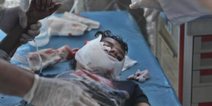
The latest figures provided by the Ministry of Health (MoH) indicate that, during the demonstrations between the 10th and 22nd of September, ten Palestinians, including four children, were killed and 1,193 were injured by Israeli forces.
Out of the total 1,193 injured, 690 patients required transfer to the MoH hospitals or NGO clinics, including 127 children and 37 females. Of the hospitalized injured, 19 cases were critically life threatening, 275 moderate, 386 mild, and the remaining 10 were unspecified cases (see also figures 1 and 2 on the following page).
The MoH and the Palestinian Red Crescent Society (PRCS) set up a total of ten Trauma Stabilization Points (TSPs), with the tenth one established at the beach north of Gaza. At least 503 injured patients were managed at the TSPs and discharged at the TSPs. The World Health Organization (WHO) continues to strengthen the capacity of the TSPs, across Gaza, to provide life-saving interventions.
According to the PNN, Gaza’s 14 public hospitals rely on donated fuel to run generators during the electricity black-outs, which continue to last up to 18-20 hours per day. The last batch of UN donated fuel has been distributed during August of 2018. Local authorities have since procured 120,000 litres, and a charity organization (Human Appeal International) has provided 10,500 litres, to sustain services at public hospitals throughout the month of September.
Nevertheless, hospitals are rationalizing the use of the remaining fuel reserves by suspending sterilization, laundry, cleaning, catering and selected diagnostic services during electricity cuts.
On 17 September the Humanitarian Coordinator (HC), announced the release of US$1.0 million from the humanitarian fund for fuel procurement. This support will ensure uninterrupted electricity supply for up to 250 critical health and water and sanitation facilities for a period of up to 6-7 weeks.
In August of 2018, the Central Drug Store of the MoH in Gaza reported 47% of essential drugs, at less than one month’s supply, and 40% completely depleted. 30% of essential disposables were at less than one month’s supply.
Click here for WHO Situation Report
Out of the total 1,193 injured, 690 patients required transfer to the MoH hospitals or NGO clinics, including 127 children and 37 females. Of the hospitalized injured, 19 cases were critically life threatening, 275 moderate, 386 mild, and the remaining 10 were unspecified cases (see also figures 1 and 2 on the following page).
The MoH and the Palestinian Red Crescent Society (PRCS) set up a total of ten Trauma Stabilization Points (TSPs), with the tenth one established at the beach north of Gaza. At least 503 injured patients were managed at the TSPs and discharged at the TSPs. The World Health Organization (WHO) continues to strengthen the capacity of the TSPs, across Gaza, to provide life-saving interventions.
According to the PNN, Gaza’s 14 public hospitals rely on donated fuel to run generators during the electricity black-outs, which continue to last up to 18-20 hours per day. The last batch of UN donated fuel has been distributed during August of 2018. Local authorities have since procured 120,000 litres, and a charity organization (Human Appeal International) has provided 10,500 litres, to sustain services at public hospitals throughout the month of September.
Nevertheless, hospitals are rationalizing the use of the remaining fuel reserves by suspending sterilization, laundry, cleaning, catering and selected diagnostic services during electricity cuts.
On 17 September the Humanitarian Coordinator (HC), announced the release of US$1.0 million from the humanitarian fund for fuel procurement. This support will ensure uninterrupted electricity supply for up to 250 critical health and water and sanitation facilities for a period of up to 6-7 weeks.
In August of 2018, the Central Drug Store of the MoH in Gaza reported 47% of essential drugs, at less than one month’s supply, and 40% completely depleted. 30% of essential disposables were at less than one month’s supply.
Click here for WHO Situation Report
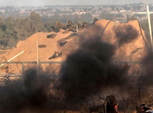
Israeli soldiers shot, on Thursday evening, at least two young Palestinian men, including one who suffered life-threatening wounds, in Central Gaza.
Dr. Ashraf al-Qedra, the spokesperson of the Health Ministry in Gaza, said the soldiers shot one Palestinian with a live round in the head, before he was rushed to the Indonesian Hospital.
Eyewitnesses said Israeli army sharpshooters, stationed in fortified posts across the perimeter fence, targeted Palestinian protesters, wounding two, including the one who suffered a serious injury.
The second Palestinian was shot with a live round in the thigh, and suffered a moderate wound.
Dr. Ashraf al-Qedra, the spokesperson of the Health Ministry in Gaza, said the soldiers shot one Palestinian with a live round in the head, before he was rushed to the Indonesian Hospital.
Eyewitnesses said Israeli army sharpshooters, stationed in fortified posts across the perimeter fence, targeted Palestinian protesters, wounding two, including the one who suffered a serious injury.
The second Palestinian was shot with a live round in the thigh, and suffered a moderate wound.
27 sept 2018
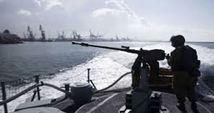
Israeli gunboats on Thursday morning attacked Palestinian fishermen off the northern shores of the besieged Gaza Strip.
Fishermen reported that two gunboats intercepted fishing boats off the coast of Beit Lahia before soldiers aboard them started to open machinegun fire around them.
They added that the naval forces prevented the fishermen from sailing beyond three nautical miles in Gaza waters.
Fishermen reported that two gunboats intercepted fishing boats off the coast of Beit Lahia before soldiers aboard them started to open machinegun fire around them.
They added that the naval forces prevented the fishermen from sailing beyond three nautical miles in Gaza waters.
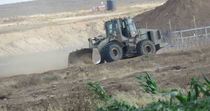
Israeli military bulldozers on Thursday morning moved into eastern Khan Younis province, south of the blockaded Gaza Strip.
Four Israeli bulldozers stationed at the Sofa military site moved 50 meters into the eastern corners of Khan Younis and leveled Palestinian lands near the border fence.
Israeli army vehicles and patrols showed up on the borderland shortly afterwards to escort the bulldozers.
Four Israeli bulldozers stationed at the Sofa military site moved 50 meters into the eastern corners of Khan Younis and leveled Palestinian lands near the border fence.
Israeli army vehicles and patrols showed up on the borderland shortly afterwards to escort the bulldozers.
26 sept 2018
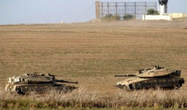
Several armored Israeli military vehicles carried out, on Wednesday morning, a limited invasion into Palestinian lands, east of Jabalia, in the northern part of the Gaza Strip.
Media sources in Gaza said four armored Israeli military bulldozers, and several jeeps, advanced nearly 50 meters into the Palestinian lands, and leveled them.
They added that several Israeli military drones hovered over the area, and other parts close to the perimeter fence, across the coastal region.
Last night, the soldiers attacked dozens of protesters in the Gaza Strip, and injured many Palestinians.
Media sources in Gaza said four armored Israeli military bulldozers, and several jeeps, advanced nearly 50 meters into the Palestinian lands, and leveled them.
They added that several Israeli military drones hovered over the area, and other parts close to the perimeter fence, across the coastal region.
Last night, the soldiers attacked dozens of protesters in the Gaza Strip, and injured many Palestinians.
25 sept 2018
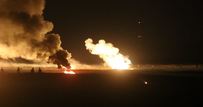
Several Palestinian young protesters on Tuesday evening suffered injuries when Israeli soldiers attacked their night rallies in different border areas east of the besieged Gaza Strip.
According to the health ministry, five protesters was injured, one of them critically, by Israeli gunfire during night protests.
Meanwhile, an Israeli drone fired at least three air-to-surface missiles at an area east of Gaza City, with no reported casualties.
During the Gaza night protests, which started recently, protesters torch tires, use loudspeakers to play national songs and sirens, and flash laser beams at soldiers near the border fence.
Organizers say the night rallies are aimed at creating confusion among Israeli forces behind the fence.
Army Injures Five Palestinians In Gaza
Israeli soldiers shot, on Tuesday evening, five Palestinians in the Great Return Camp, east of Khuza’a town, east of Khan Younis, in the southern part of the Gaza Strip and near Jabalia, in northern Gaza.
The Palestinian Health Ministry in Gaza has reported that two Palestinians were injured, including one who suffered a very serious gunshot wound to the head in northern Gaza, and were rushed to the Indonesian hospital, east of Jabalia.
Dr. Ashraf al-Qedra, the spokesperson of the Health Ministry in Gaza, said the Palestinian, who was shot in the head, was later rushed to the Shifa Medical Center, due to the seriousness of his condition.
It added that the soldiers shot two Palestinians near Khuza’a town, east of Khan Younis, and one who was shot with a gas bomb in his head, east of Gaza city.
Protests were held along the eastern border areas along the Gaza Strip, including Khan Younis, al-Boreij in central Gaza, and Jabalia, in northern Gaza.
The protesters burnt tires, and used laser pointers directly at Israeli military sniper posts, while the soldiers fired live rounds, in addition to high-velocity gas bombs and concussion grenades.
Furthermore, the Israeli Navy fired many live rounds at Palestinian fishing boats, near the shore of Gaza city, causing no damage or injuries.
Israel also is threatening to reduce the fishing zone from six nautical miles to three, if the protests continue.
According to the health ministry, five protesters was injured, one of them critically, by Israeli gunfire during night protests.
Meanwhile, an Israeli drone fired at least three air-to-surface missiles at an area east of Gaza City, with no reported casualties.
During the Gaza night protests, which started recently, protesters torch tires, use loudspeakers to play national songs and sirens, and flash laser beams at soldiers near the border fence.
Organizers say the night rallies are aimed at creating confusion among Israeli forces behind the fence.
Army Injures Five Palestinians In Gaza
Israeli soldiers shot, on Tuesday evening, five Palestinians in the Great Return Camp, east of Khuza’a town, east of Khan Younis, in the southern part of the Gaza Strip and near Jabalia, in northern Gaza.
The Palestinian Health Ministry in Gaza has reported that two Palestinians were injured, including one who suffered a very serious gunshot wound to the head in northern Gaza, and were rushed to the Indonesian hospital, east of Jabalia.
Dr. Ashraf al-Qedra, the spokesperson of the Health Ministry in Gaza, said the Palestinian, who was shot in the head, was later rushed to the Shifa Medical Center, due to the seriousness of his condition.
It added that the soldiers shot two Palestinians near Khuza’a town, east of Khan Younis, and one who was shot with a gas bomb in his head, east of Gaza city.
Protests were held along the eastern border areas along the Gaza Strip, including Khan Younis, al-Boreij in central Gaza, and Jabalia, in northern Gaza.
The protesters burnt tires, and used laser pointers directly at Israeli military sniper posts, while the soldiers fired live rounds, in addition to high-velocity gas bombs and concussion grenades.
Furthermore, the Israeli Navy fired many live rounds at Palestinian fishing boats, near the shore of Gaza city, causing no damage or injuries.
Israel also is threatening to reduce the fishing zone from six nautical miles to three, if the protests continue.
24 sept 2018
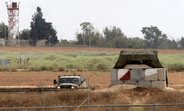
Israeli occupation soldiers, on Monday, opened fire at Palestinian youth and farmers to the east of Deir al-Balah, in the central Gaza Strip, and Abasan town, in the southern Gaza Strip.
Israeli soldiers, stationed at military checkpoints along the security fence, opened fire at young men who approached the fence in al-Sanati area, east of Abasan village, east of Khan Younis, in the southern Gaza Strip.
Israeli forces also opened fire at farmers working in their agricultural lands near the fence near Al-Nimr Gate, east of Deir al-Balah.
Israeli soldiers, stationed at military checkpoints along the security fence, opened fire at young men who approached the fence in al-Sanati area, east of Abasan village, east of Khan Younis, in the southern Gaza Strip.
Israeli forces also opened fire at farmers working in their agricultural lands near the fence near Al-Nimr Gate, east of Deir al-Balah.
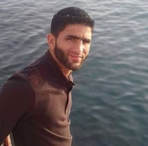
Mohammad Fayez Salim Abu Sadeq, 21
Israeli soldiers killed, Monday, one Palestinian and injured 90 others, during a protest in northern Gaza, especially at the shore where many boats attempted to sail and challenge the ongoing Israeli siege on the coastal region.
Media sources in Gaza said the soldiers fired a barrage of live fire, in addition to high-velocity gas bombs and rubber-coated steel bullets.
The Health Ministry in Gaza has confirmed that the soldiers killed Mohammad Fayez Salim Abu Sadeq, 21, and injured ninety other Palestinians, including ten who were shot with live fire.
It added that the soldiers also fired a gas bomb directly at a Palestinian Red Crescent ambulance, while trying to reach some of the wounded protesters.
Furthermore, the soldiers shot Monser Sawwaf, a cameraman working of the Anadolu Turkish News Agency, with a gas bomb in his leg, while live rounds also struck his camera and equipment.
It is worth mentioning that, using slingshots, Palestinian protesters managed to down an Israeli drone while firing gas bombs at them.
The soldiers also fired many gas bombs and live rounds at the boats, trying to break the illegal siege on Gaza.
Israeli soldiers killed, Monday, one Palestinian and injured 90 others, during a protest in northern Gaza, especially at the shore where many boats attempted to sail and challenge the ongoing Israeli siege on the coastal region.
Media sources in Gaza said the soldiers fired a barrage of live fire, in addition to high-velocity gas bombs and rubber-coated steel bullets.
The Health Ministry in Gaza has confirmed that the soldiers killed Mohammad Fayez Salim Abu Sadeq, 21, and injured ninety other Palestinians, including ten who were shot with live fire.
It added that the soldiers also fired a gas bomb directly at a Palestinian Red Crescent ambulance, while trying to reach some of the wounded protesters.
Furthermore, the soldiers shot Monser Sawwaf, a cameraman working of the Anadolu Turkish News Agency, with a gas bomb in his leg, while live rounds also struck his camera and equipment.
It is worth mentioning that, using slingshots, Palestinian protesters managed to down an Israeli drone while firing gas bombs at them.
The soldiers also fired many gas bombs and live rounds at the boats, trying to break the illegal siege on Gaza.
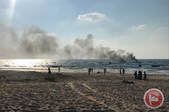
Palestinian crowds gathered at the west northern borders of the besieged Gaza Strip to take part in a boat protest setting off from the Gaza seaport against the siege, on Monday.
A Ma'an reporter said that the Israeli navy obstructed the protest's way off the shore by firing live ammunition and tear-gas bombs towards protesters.
The National Committee for Breaking the Siege, that organized the protest, called upon the "free world" to save Gaza.
As part of Israel's blockade of the coastal enclave since 2007, the Israeli army, citing security concerns, requires Palestinian fishermen in the Gaza Strip to work within a limited "designated fishing zone," the exact limits of which are decided by the Israeli authorities and have historically fluctuated.
Many attempts have been made throughout the years to draw the public's attention to and break the on-going siege of the Gaza Strip whether via ships attempting to sail into Gaza or ships attempting to sail from Gaza.
A Ma'an reporter said that the Israeli navy obstructed the protest's way off the shore by firing live ammunition and tear-gas bombs towards protesters.
The National Committee for Breaking the Siege, that organized the protest, called upon the "free world" to save Gaza.
As part of Israel's blockade of the coastal enclave since 2007, the Israeli army, citing security concerns, requires Palestinian fishermen in the Gaza Strip to work within a limited "designated fishing zone," the exact limits of which are decided by the Israeli authorities and have historically fluctuated.
Many attempts have been made throughout the years to draw the public's attention to and break the on-going siege of the Gaza Strip whether via ships attempting to sail into Gaza or ships attempting to sail from Gaza.
23 sept 2018
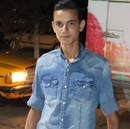
Emad Daoud Eshteiwi, 21
The Palestinian Health Ministry has reported that Israeli soldiers killed, on Sunday evening, a young Palestinian man, and injured at least 20 others, including one medic, along the eastern part of the besieged Gaza Strip.
Dr. Ashraf al-Qedra, the spokesperson of the Health Ministry in Gaza, said the soldiers shot Emad Daoud Eshteiwi, 21, with a live round in the head, east of Gaza city, and moderately injured a medic in the leg.
He added that the soldiers also shot twenty Palestinians with live rounds, along the perimeter fence, in the eastern parts of the coastal region, especially east of the al-Boreij refugee camp, in central Gaza, as the army shot at least 14 Palestinians.
The Palestinians were shot during the ongoing Great Return March processions in the besieged Gaza Strip, while many burnt tires in an attempt to block the sniper vision of the Israeli soldiers, stationed hundreds of meters away, across the perimeter fence.
In addition, Israeli drones fired missiles at protesters near the fence, east of Gaza city, causing several injuries.
The Palestinian Health Ministry has reported that Israeli soldiers killed, on Sunday evening, a young Palestinian man, and injured at least 20 others, including one medic, along the eastern part of the besieged Gaza Strip.
Dr. Ashraf al-Qedra, the spokesperson of the Health Ministry in Gaza, said the soldiers shot Emad Daoud Eshteiwi, 21, with a live round in the head, east of Gaza city, and moderately injured a medic in the leg.
He added that the soldiers also shot twenty Palestinians with live rounds, along the perimeter fence, in the eastern parts of the coastal region, especially east of the al-Boreij refugee camp, in central Gaza, as the army shot at least 14 Palestinians.
The Palestinians were shot during the ongoing Great Return March processions in the besieged Gaza Strip, while many burnt tires in an attempt to block the sniper vision of the Israeli soldiers, stationed hundreds of meters away, across the perimeter fence.
In addition, Israeli drones fired missiles at protesters near the fence, east of Gaza city, causing several injuries.
22 sept 2018
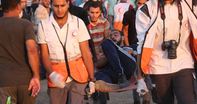
At least 18 youths were injured Saturday evening when the Israeli occupation forces (IOF) opened fire at the Palestinians protesting along the border fence east of Gaza.
The PIC reporter said that the IOF attacked Palestinian protesters with live ammunition injuring 15 of them east of Jabalia refugee camp, north of Gaza.
In a related development, an Israeli drone fired at least one missile at a group of Palestinian youths north of Gaza with no injuries reported.
At the same time in Khan Younis, south of Gaza, two Palestinians, including a journalist, suffered live bullet wounds, while dozens of Palestinian youths burned car tires and launched fireworks at the border. video
Earlier in the day, a Palestinian youth was shot and injured east of al-Bureij camp, a local source reported.
These night protests are part of the Great March of Return which was launched on 30th March. Gaza border protests mainly call for breaking the siege and allowing Palestinian refugees to return to their lands from which they were expelled in 1948.
The PIC reporter said that the IOF attacked Palestinian protesters with live ammunition injuring 15 of them east of Jabalia refugee camp, north of Gaza.
In a related development, an Israeli drone fired at least one missile at a group of Palestinian youths north of Gaza with no injuries reported.
At the same time in Khan Younis, south of Gaza, two Palestinians, including a journalist, suffered live bullet wounds, while dozens of Palestinian youths burned car tires and launched fireworks at the border. video
Earlier in the day, a Palestinian youth was shot and injured east of al-Bureij camp, a local source reported.
These night protests are part of the Great March of Return which was launched on 30th March. Gaza border protests mainly call for breaking the siege and allowing Palestinian refugees to return to their lands from which they were expelled in 1948.
Page: 33 - 32 - 31 - 30 - 29 - 28 - 27 - 26 - 25 - 24 - 23 - 22 - 21 - 20 - 19 - 18 - 17 - 16 - 15 - 14 - 13 - 12
Truce violations List of names Pictures of martyrs
Days: Aug: 26 - 25 - 24 - 23 - 22 - 21 - 20 - 19 - 18 - 17 - 16 - 15 - 14 - 13 - 12 - 11 - 10 - 9 - 8 - 7 - 6 - 5 - 4 - 3 - 2 - 1
July: 31 - 30 - 29 - 28 - 27 - 26 - 25 - 24 - 23 - 22 - 21 - 20 - 19 - 18 - 17 - 16 - 15 - 14 - 13 - 12 - 11 - 10 - 9 - 8
